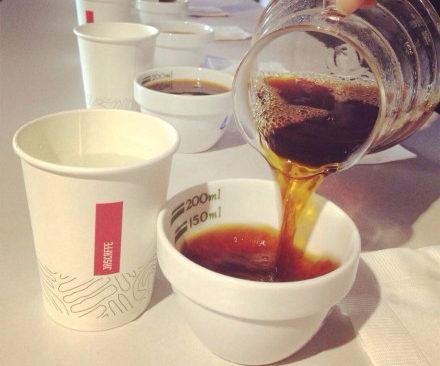Coffee in the cup depends on climate, pests and plant science.

Photo Source: Baidu Pictures
A recent report on the impact of climate change on crop cultivation mentioned that the coffee crisis was already brewing, especially the highly praised Arabica coffee beans. A study published in April in PLOS One simulates coffee cultivation in 21 different climatic conditions up to 2050, covering 60 tropical countries on both sides of the equator, where Arabica coffee is grown.
The changes of temperature and precipitation will reduce the yield and quality and increase the pressure of diseases and insect pests. "this is the first study in the world on the impact of climate change on the appropriate growing environment for Arabica coffee." Peter L? of the International Research Center for Tropical Agriculture. "globally, we expect the decline in climate suitability at low elevations and high latitudes to change production in the main Arabica coffee producing areas," said derach.
Although 2050 may sound a long way off, it will take three to five years for coffee beans to get a crop. And coffee bean cultivation should be particularly high-yielding during the period from 2020 to 2050.
Usually, people think that "big food companies will always be able to get coffee from somewhere in the future" because "after all, Vietnam has developed a coffee industry rapidly," or "even if the temperature warms up a few degrees Celsius, farmers can still grow coffee on higher mountains.
It sounds easy, but it's actually very difficult. L? Farmer derach and the study's co-authors point out that small farmers or farmers in major coffee-producing countries such as Brazil cannot simply shift production to higher elevations. There are many reasons, such as land use rights, topography and avoiding further deforestation.
In fact, most possible solutions, such as irrigation, extensive pest control, new or alternative crop varieties, shading systems, and new field cultivation, are expensive or have other negative consequences. One promising approach seems to be banana and coffee bean intercropping, using banana plants to provide the extra money and shade needed to grow coffee beans.
A referential overview document of the Consultative Group on International Agricultural Research (CGIAR) contains a short video. The video shows the impact of an average temperature rise of 2 degrees Celsius on the risk of diseases (coffee leaf rust) and pests (coffee tiger longicorn beetles), which are precisely threats in warmer conditions.
This suggests that if their existing crops are destroyed, Central American producers may be forced to return to the era of cassava with less retail value.
The economic impact of coffee is significant, especially for exporters and small farmers. Coffee is an important export product for tropical countries. Mark Pendergrast, author of left-handed Coffee, right-handed World: a Commercial History of Coffee, calls it "country mythology". As the second most traded commodity, coffee is second only to oil in value.
The coffee industry is a big business and is highly concentrated in the hands of several major food companies. The views of economist Tim Harford help us understand the end of the industry-coffee shops. In commercial centers in rich cities in industrialized countries, a cup of coffee costs at least $3, he says.
Let's look at the other end of the equation-the coffee grower.
In 2010, Duncan Green, a well-known blogger and Oxfam strategist, asked coffee growers in Ethiopia, "how much do you think a cup of coffee in a London coffee shop should cost?" Their guess is 2% of the actual price, or 50 times the difference. The girls and women who sort coffee beans there may have to work for eight years to earn Green's one-day income.
About 70 per cent of the world's coffee production comes from small producers in the coffee industry, which has 25 million growers. The above events show that profits will not fall on small producers in the end.
Roger Williamson is a dual-source visiting scholar at the World Institute for Development Economics at the United Nations University and the Development Institute at the University of Sussex, as well as an independent consultant. "this is all thought-provoking evidence that the coffee in our cup depends on climate, pest and plant science, not to mention that the livelihoods of more than 100 million people depend on this good balance," he commented. " (translated by Wang Fang)
Important Notice :
前街咖啡 FrontStreet Coffee has moved to new addredd:
FrontStreet Coffee Address: 315,Donghua East Road,GuangZhou
Tel:020 38364473
- Prev

I'll give you a reason to drink fine coffee.
We all know that coffee not only has a beneficial effect on the body, but also makes people feel uncomfortable. Everyone has drunk coffee that is so bitter that it is hard to swallow, and they even feel sick to their stomach, or have a sore throat, so they have to drink water desperately to try to dissolve their uncomfortable feelings. But when the intake is normal, most people can still enjoy it.
- Next

Qingdao a cafe turned into a "mini library"
Qingdao, July 7 (Reporter Liu Yanjie) Recently, Shandong Province Qingdao City Shinan District started coffee reading Qingdao reading activities. The government library distributes and replaces books for cafes free of charge. More than 260 cafes in the whole district have been transformed into mini libraries, meeting the reading needs of citizens and tourists, especially young people, and creating a good atmosphere of a scholarly city. We're going to take the library's literary history
Related
- Is espresso stored overnight in the refrigerator harmful to your body? Is frozen coffee better than freshly ground coffee?
- What parameters and proportions of water temperature should be used to grind and brew fresh coffee beans? Why can't I drink freshly roasted coffee right away?
- Customers have "changed" Manner's new products! Shop assistant: Please don't mess around!
- Remove sockets in customer areas at Starbucks stores?! Netizen: I won't go if I really tear it down
- What is the difference between the taste steps of sun-dried coffee and washed coffee? Why is sun-cured coffee sweeter and washed coffee sour?
- The recipe for salty grapefruit dirty is revealed! Coffee Festival salty grapefruit dirty coffee making materials parameters ratio milk share!
- How about the flavor of Sunlight 74158 at Sidamo Banshaha Mathieu Processing Factory in Ethiopia? 74158 Share the proportion of coffee brewing parameters!
- What effect does Italian American coffee with filter paper have? Will coffee taste better if it is put on filter paper at the bottom of the powder bowl?
- What is the color difference in coffee beans? What are the characteristics of honey processed coffee beans? Why are the anaerobically treated coffee beans uneven in color?
- How does novice Xiaobai quickly get started and make coffee? Newbies learn to make coffee by hand and share the specific steps and process process!

